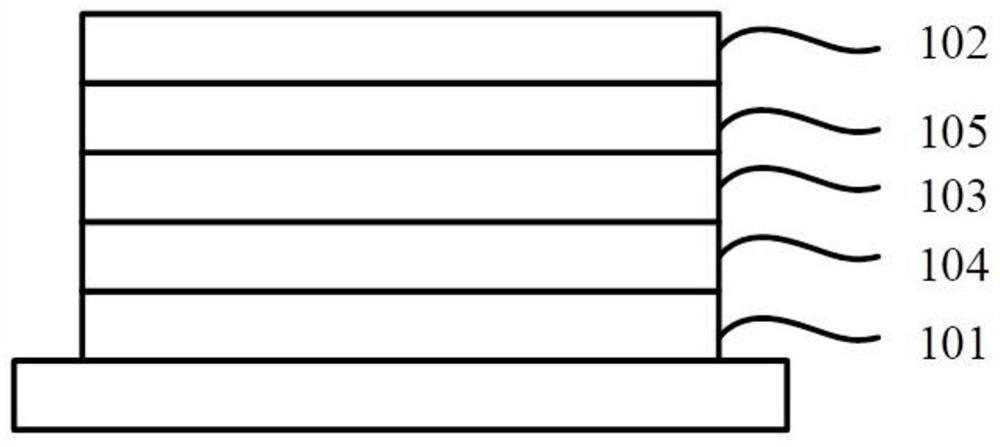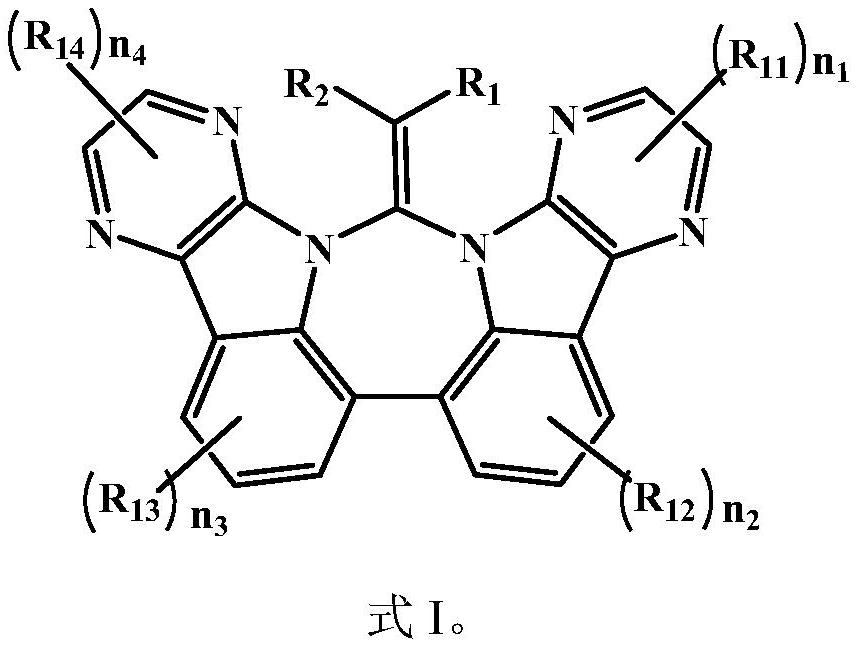A kind of organic compound, electroluminescent material and application thereof
A technology of electroluminescent materials and organic compounds, which is applied in the field of organic compounds and electroluminescent materials, can solve the problems that restrict the development of full-color OLED display devices, the types of blue light-induced phosphorescent devices are few, and the device efficiency is not high enough, so as to improve the luminescence Efficiency and external quantum efficiency, balanced carrier transport performance, and reduced turn-on voltage and energy consumption
- Summary
- Abstract
- Description
- Claims
- Application Information
AI Technical Summary
Problems solved by technology
Method used
Image
Examples
Embodiment 1
[0101] This embodiment provides an organic compound M1 with the following structure:
[0102]
[0103] The preparation method of this organic compound M1 comprises the steps:
[0104] (1)
[0105] Add 4.02g (10mmol) of Compound A, 1.91g (20mmol) of Compound B, 150mL of toluene, sodium tert-butoxide NaOt-Bu (2.88g, 30mmol), tris(dibenzyl Dipalladium Pd 2 (dba) 3 (0.18g, 0.2mmol) and tri-tert-butylphosphine P(t-Bu) 3 (1 mL of 10% toluene solution), and then reacted at 120° C. for 24 h under a nitrogen atmosphere. Cool to room temperature, pour the reaction solution into 200 mL of ice water, extract three times with dichloromethane, combine the organic phases, spin into silica gel, and perform column chromatography (the mobile phase is a mixed solution of dichloromethane and n-hexane with a volume ratio of 1:1) Separate and purify to obtain compound C.
[0106] Characterization results of compound C:
[0107] 1 H-NMR (400MHz, CDCl 3 ): δ8.30(d, J=7.5Hz, 2H), 8.20-8....
Embodiment 2
[0130] This embodiment provides an organic compound M2 with the following structure:
[0131]
[0132] The preparation method of this organic compound M2 comprises the steps:
[0133]
[0134] Under an Ar atmosphere, 1.6 g (24 mmol) of zinc powder and 40 mL of THF were added to a three-necked flask equipped with a magnetic stirrer. The mixture was cooled to -5 °C and the TiCl 4 1.3 mL (12 mmol) was added slowly keeping the temperature below 10 °C. The suspended mixture was warmed to room temperature and stirred for 0.5 h, then heated to reflux for 2.5 h. Compound G 7.25g (20mmol, the preparation method is the same as in Example 1) and Compound H-2 3.69g (20mmol) were dissolved in 15mL THF, and then slowly added dropwise to the suspended mixture, after the addition, the reaction mixture was heated to reflux, Until the carbonyl compound is consumed (monitored by TLC) (about 14h). After cooling down, use 10% K 2 CO 3 The reaction was quenched with aqueous solution an...
Embodiment 3
[0139] This embodiment provides an organic compound M3 with the following structure:
[0140]
[0141] The preparation method of this organic compound M3 comprises the steps:
[0142]
[0143] Under an Ar atmosphere, 1.6 g (24 mmol) of zinc powder and 40 mL of THF were added to a three-necked flask equipped with a magnetic stirrer. The mixture was cooled to -5 °C and the TiCl 4 1.3 mL (12 mmol) was added slowly keeping the temperature below 10 °C. The suspended mixture was warmed to room temperature and stirred for 0.5 h, then heated to reflux for 2.5 h. Compound G 7.25g (20mmol, the preparation method is the same as in Example 1) and Compound H-3 5.69g (20mmol) were dissolved in 15mL THF, then slowly added dropwise to the suspended mixture, and the reaction mixture was heated to reflux after the addition , until the carbonyl compound was consumed (monitored by TLC) (about 14h). After cooling down, use 10% K 2 CO 3 The reaction was quenched with aqueous solution a...
PUM
| Property | Measurement | Unit |
|---|---|---|
| glass transition temperature | aaaaa | aaaaa |
| current efficiency | aaaaa | aaaaa |
| external quantum efficiency | aaaaa | aaaaa |
Abstract
Description
Claims
Application Information
 Login to View More
Login to View More - R&D Engineer
- R&D Manager
- IP Professional
- Industry Leading Data Capabilities
- Powerful AI technology
- Patent DNA Extraction
Browse by: Latest US Patents, China's latest patents, Technical Efficacy Thesaurus, Application Domain, Technology Topic, Popular Technical Reports.
© 2024 PatSnap. All rights reserved.Legal|Privacy policy|Modern Slavery Act Transparency Statement|Sitemap|About US| Contact US: help@patsnap.com










